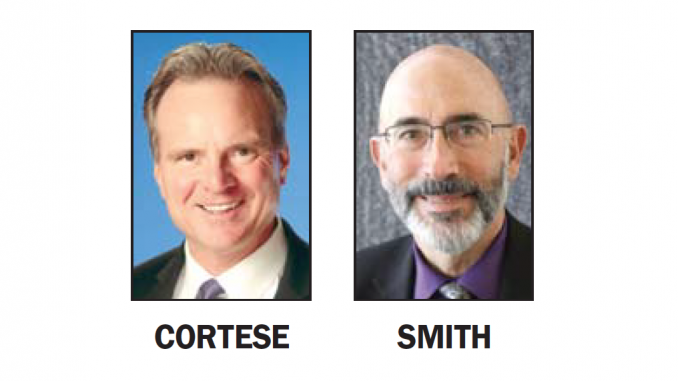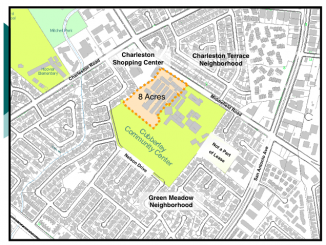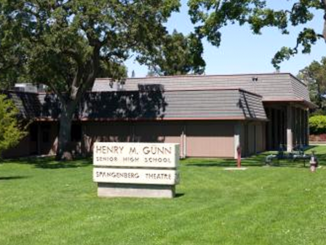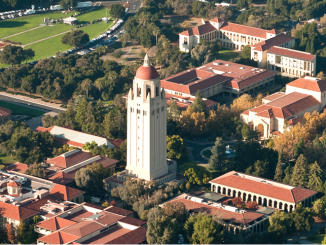
By the Daily Post staff
Santa Clara County Supervisor Dave Cortese yesterday (Sept. 24) accused the county’s top administrator, Jeff Smith, of “running a rogue operation” when it came to whether the county should be negotiating a development agreement with Stanford over its 3.5-million-square-foot expansion plan.
In a heated exchange at the supervisors meeting, Cortese, who represents San Jose, wanted to know why Smith’s employees weren’t negotiating with Stanford.
When it comes to the approving expansion, the county has a couple of choices — approve the development with a list of conditions Stanford must meet that would cover things like traffic and housing, or negotiate a development agreement that gives both sides more flexibility. The county could also do both.
Stanford is pressing hard for a development agreement, saying such a deal would “front load” benefits for the community while giving the university predictability about what it would be required to provide over the next 40 years.
On the other hand, approving the development with conditions is a more open process. The public can watch the hearings and comment on them. A development agreement is typically negotiated behind closed doors, and revealed to the public once both sides reach a deal.
Last year, the supervisors wanted to do both: conditions of approval and a development agreement. The five-member board of supervisors assigned two of its members — Joe Simitian of the North County, and Cindy Chavez of San Jose— to reach a development agreement with Stanford.
The 30% deal
But those talks broke off in April when Stanford reached a tentative side deal with the Palo Alto Unified School District. This was what’s been called the 30-cents-on-a-dollar agreement, where the district agreed that Stanford, whose academic housing is tax-exempt, would only pay 30% of the cost of educating students from Stanford rather than full freight.
The side agreement said that Stanford would only honor the 30% deal if the supervisors approved the development agreement with the county.
At that point, Simitian slammed the brakes on the negotiations for a development agreement. He said the side deal, with its provision that it was contingent on approval of the development agreement, violated the rules that had been agreed to by Stanford and the county.
Essentially, the side deal gave Stanford extra leverage in its negotiations for a development agreement. Stanford could say that if it didn’t get what it wanted in the development agreement, then it would pull out of its commitment to the schools.
The school board declined to vote on the side deal.
Who negotiates with Stanford?
Yesterday, Smith, the top county administrator, told Cortese that it was the job of Simitian and Chavez to negotiate with Stanford. But he acknowledged that Stanford has been sending development agreement proposals to his office.
Smith also said that he’s more comfortable with approving the project with conditions.
“In this situation, we have a complex and very complete planning document with lots of conditions of approval that already went through the Planning Commission and coming to the board for action. Trying to superimpose development agreement negotiations on top of that is a formula for confusion and not a good approach,” Smith said.
At that point, Cortese was livid. He said Smith should have been responding to Stanford’s proposals over the past year.
“I’ll see if you even bothered to counter offer what Stanford put out there next week (when more documents are released), but if you didn’t, and I combine that with your statement right now, it tells me that you’re running a rogue operation,” Cortese said.
Smith calmly told Cortese that it’s the job of the Simitian-Chavez committee to come up with a development agreement, not his office.
“That’s about as derelict as anything I’ve ever heard from anybody in management that’s ever been in a governance position to supervise, to evaluate or to keep on my payroll,” Cortese said. “It’s just absurd, absolutely absurd to say that you understood the direction of this board.”
He added, “I’m speechless. I don’t know what to say.”
Impact on Palo Alto schools
Also at yesterday’s hearing, Simitian and Chavez gave Smith a list of questions regarding the impact the Stanford expansion would have on the Palo Alto schools, an open suggestion that the two supervisors might press in future hearings for Stanford to improve the offer it has made to the school district.
The questions included: how many students will the development add to schools, how much does the district lose because of Stanford’s property tax exemption, and what would be the impact on per pupil funding in the district given the increase in enrollment without additional property tax revenue?
Stanford’s proposal is entering the final stages of the county approval process with hearings this month and next before the board of supervisors.
A second workshop, similar to yesterday’s, is set for Oct. 8 in the supervisors’ chambers, 70 W. Hedding St., San Jose. A hearing is planned for Oct. 22 at 6 p.m. in the Palo Alto City Council chambers and a second hearing is set for Nov. 5 in San Jose.



